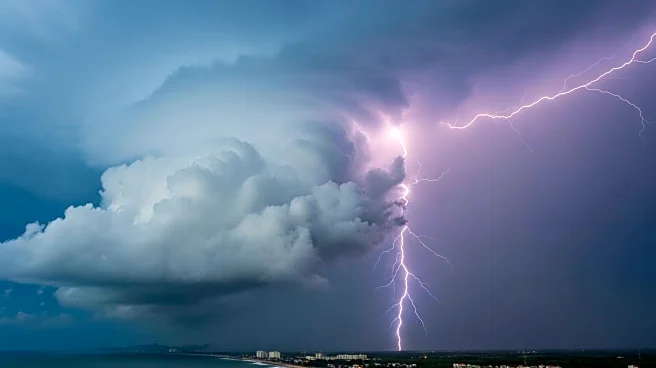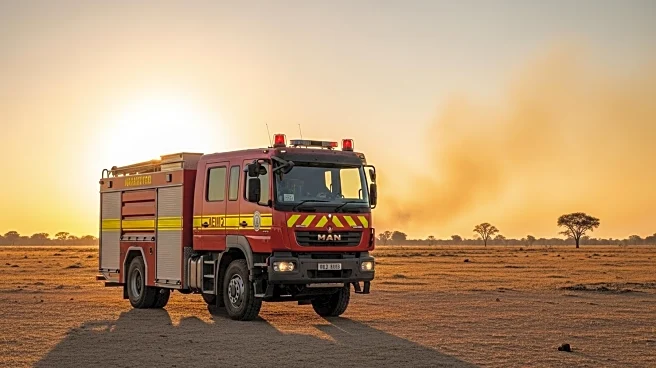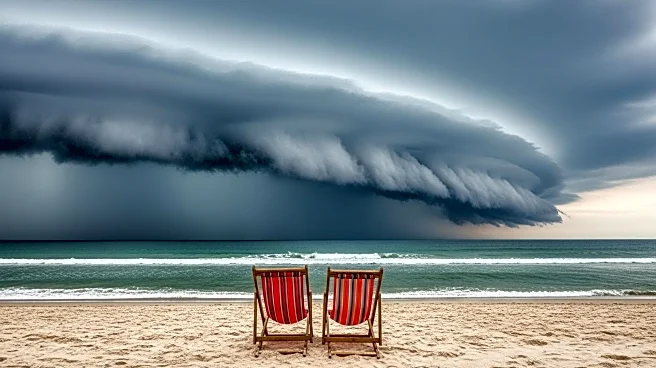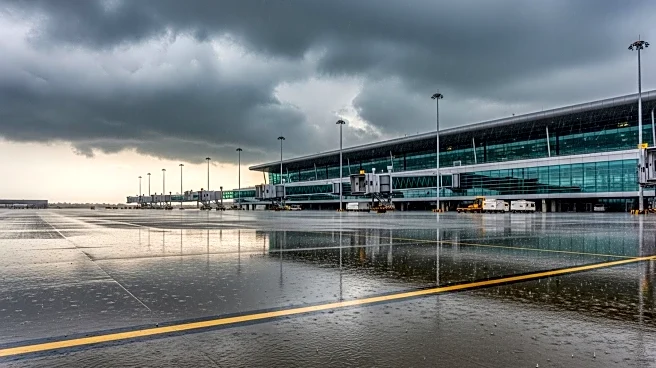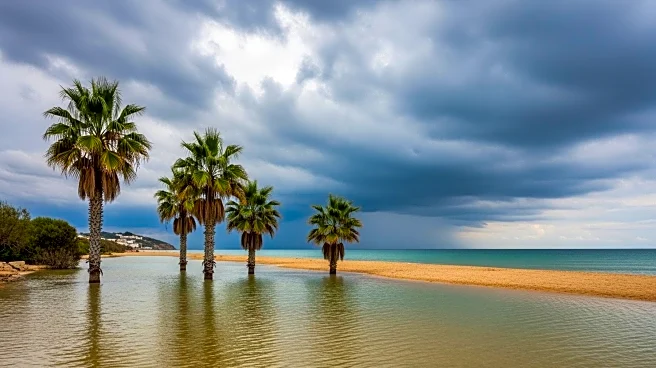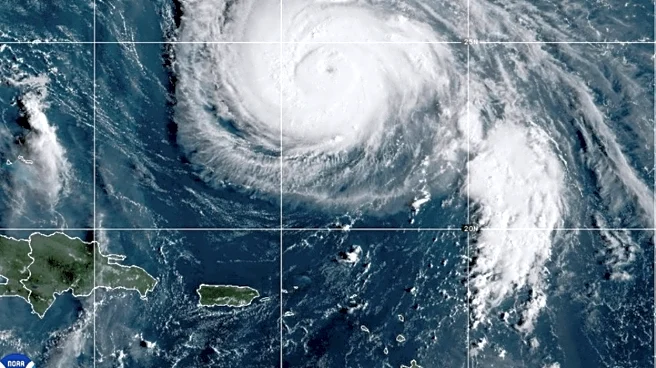What is the story about?
What's Happening?
The Balearic islands of Ibiza and Formentera have been hit by severe weather, resulting in torrential rain and flash flooding. The Spanish national weather agency, AEMET, had issued a red alert due to the extraordinary danger posed by the remnants of former Hurricane Gabrielle. Ibiza Town experienced 254 millimeters of rain in just 24 hours, surpassing half of its usual annual rainfall. At Ibiza Airport, 174 millimeters of rain fell, marking the wettest day since records began in 1952. Despite water leaking into the terminal, the airport remained operational, with most flights continuing as scheduled. Emergency services responded to over 130 incidents, including rescues from cars, lifts, and flooded homes. The military emergency unit was deployed to assist with the situation.
Why It's Important?
The flooding in Ibiza and Formentera highlights the vulnerability of popular tourist destinations to extreme weather events. The impact on travel infrastructure, such as airports and roads, can disrupt tourism, a significant economic driver for the region. The situation underscores the importance of robust emergency response systems and infrastructure resilience in the face of climate-related challenges. For travelers, especially those from Australia who frequent the Balearics for Mediterranean tours, the flooding serves as a reminder to stay informed about weather conditions and potential disruptions. The event also raises questions about the long-term effects of climate change on travel and tourism industries globally.
What's Next?
As the weather is expected to improve, with forecasts indicating mainly fine and dry conditions, the focus will shift to recovery and assessing the damage. Travelers are advised to monitor updates from their operators regarding ferry links and road transfers, which may still be affected. The Spanish weather agency has downgraded warnings for mainland Valencia, suggesting a return to normalcy. However, the incident may prompt discussions on enhancing infrastructure resilience and emergency preparedness in tourist-heavy regions.
AI Generated Content
Do you find this article useful?


